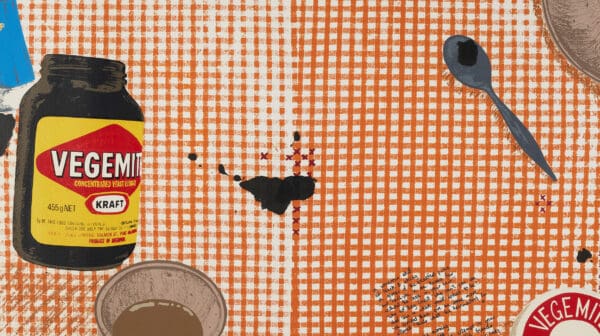
Reframing a Collection
Drawn from the Cruthers Collection of Women’s Art at the University of Western Australia (UWA), Lawrence Wilson Art Gallery’s show Place Makers, reframes the artists—who just happen to be female.
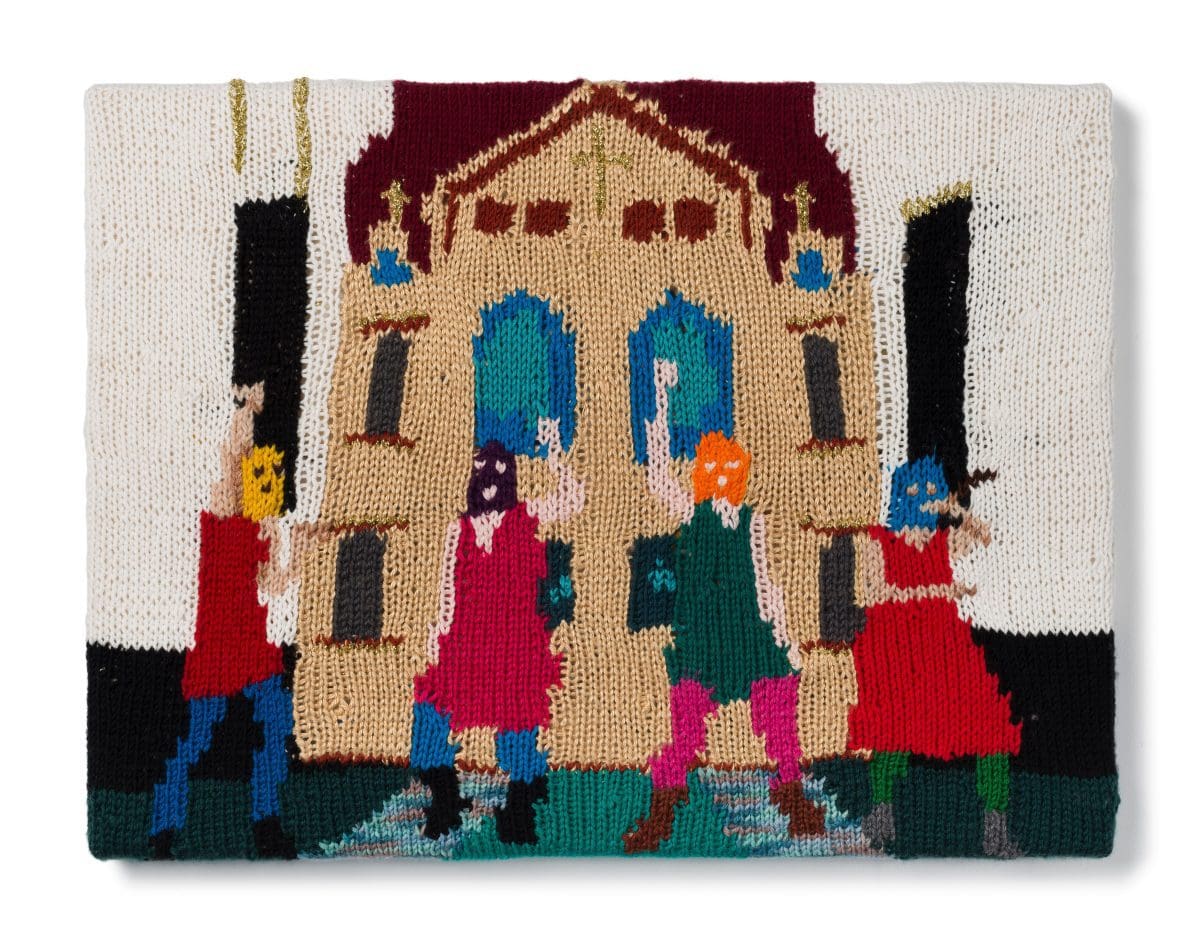
Kate Just, Feminist Fan #3 (Pussy Riot at Moscow’s Cathedral of Christ the Saviour, 2012), 2015.

Lauren and Kass Hernandez, Crossing Threads®, THE PASSAGE, 2021, bamboo, chenille, organic Egyptian cotton, fairtrade hemp, jute, leather, linen, mulberry tussah silk, botanically-dyed raffia, upcycled sari silk, and wire on galvanised steel frame, 90 x 70 x 10cm approx. Image courtesy of the artists.
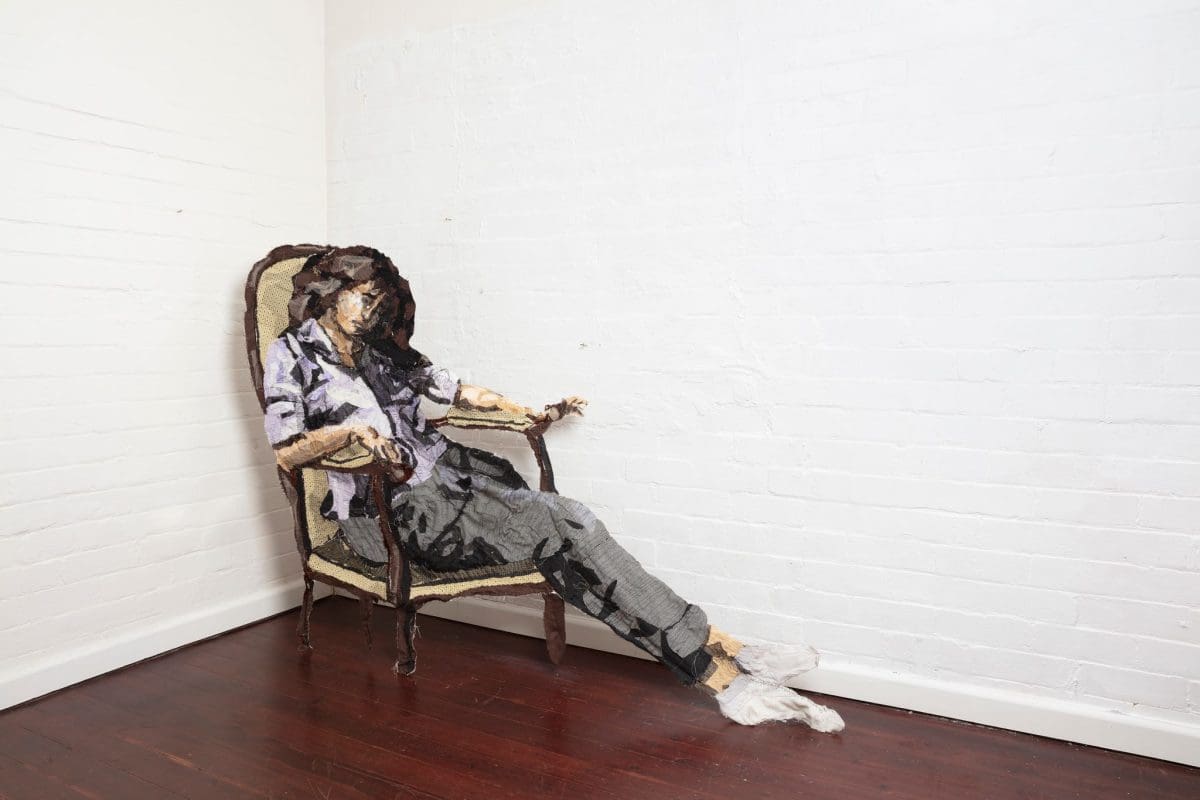
Julia Gutman, The Black Jeans, 2021, clothes worn and forgotten by Gutman and her friends, thread on calico, 140 x 188cm. Photographed by Simon Hewson at Fatografi.

Paula do Prado, Habla con la luna/Talks with the moon, 2021, wool, cotton, acrylic yarn, paper covered wire, ribbon, metallic thread, pom poms, poly and cotton sewing thread, collected European lace, repurposed plastic fruit netting, metal sinkers, 160 x 230 x 10cm irregular. Image by Document Photography.
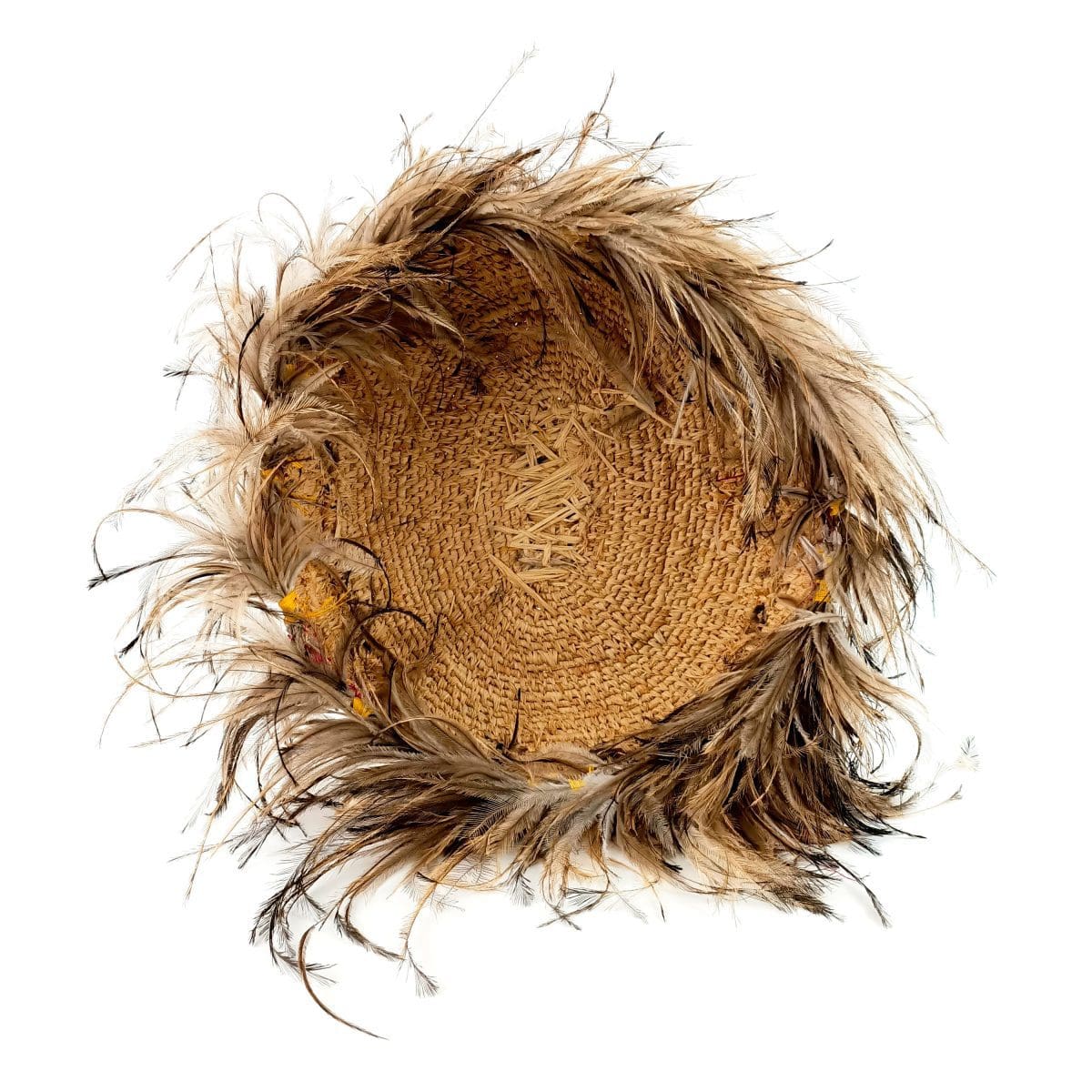
Puna Yanima, Large solid round basket 1, 2020, raffia, wipya (emu feathers), 60 x 20cm. Image courtesy of Tjanpi Desert Weavers.
“Textiles are a form of language, a dialect used to communicate,” says Sydney-based curator Sarah Rose. Elaborating on this idea, Rose has brought together a selection of contemporary textile art in an exhibition developed specifically for the Fairfield City Museum and Gallery.
With an all-female lineup of artists, Rose says gender is an important factor: “I wanted to acknowledge the inherent history women have with textiles,” she explains, “especially since textiles have been traditionally located in the domestic space.”
Five new works were commissioned by Rose, including a soft-sculpture meditation on collaboration and motherhood by Crossing Threads (Lauren and Kass Hernandez), and Julia Gutman’s fabric-based reinterpretation of the 1937 Balthus painting, The White Skirt. A linear installation by Nadia Hernández illustrates the relationship between women and cooking, and Paula do Prado’s work is a feminine evocation of a cumbia folk song. In her installation Mending fragments of a memory, Linda Sok references the true story of how her grandmother stitched jewellery into her clothing when fleeing from the Khmer Rouge, by hand-sewing gold thread onto swathes of patchworked fabric.
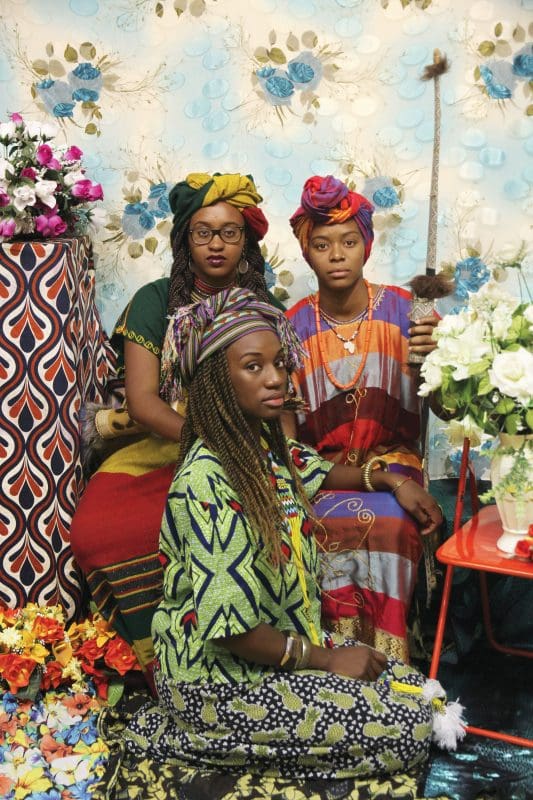
In addition, Atong Atem’s 2015 photograph Paanda highlights the sitter’s brightly patterned clothing as a way to reclaim cultural narrative, while Tjanpi Desert Weavers use traditional basket-weaving techniques to reflect the natural life of their homelands. Croatian-Australian artist Monika Cvitanovic Zaper embroiders into gridded lace curtains to create abstract images connected to her maternal lineage, and Kate Just’s Feminist Fan series uses knitting to recreate portraits of influential artists and artworks.
As Rose points out, each artist employs textiles in a distinctly contemporary way to hold memory and embody shared experience, revealing the art form as a powerful communication tool. “Even while nuancing the domesticity of textiles, the artists aren’t trapped by it,” she says. “I love this sense of rebelling. By usurping the general use of textiles, we are able to look at how contemporary women are using this medium as a way of communicating their sense of self and who they are, while also acknowledging where they have come from.”
In the fibre of her being
Fairfield City Museum and Gallery
23 October – 12 February 2022
This article was originally published in the September/October 2021 print edition of Art Guide Australia.